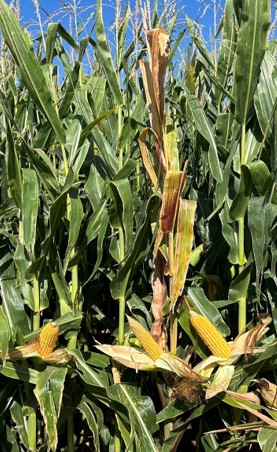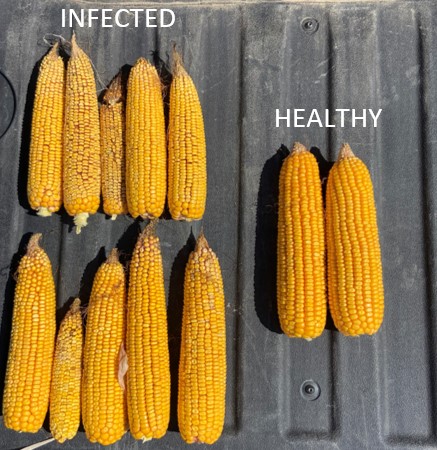Another Pest to Add to Our Scouting List: Corn Stunt Disease Confirmed in Kansas
Teal Mills, Southern Region Agronomist
Teal Mills, Southern Region Agronomist
Harvest is complete for many operations across Kansas and surrounding areas, known as the Southern Region for Hoegemeyer. The dry, warm fall has led to many operations finishing harvest ahead of prior years. Some areas experienced record yields, while others suffered from a lack of rain, hail, and the emergence of a new disease that may have impacted yields. In August 2024, several counties in Kansas and Oklahoma confirmed the presence of corn stunt disease.
Corn stunt disease is caused by a complex of pathogens. The bacterium confirmed in Kansas and Oklahoma is corn stunt spiroplasma (CSS). Other pathogens in this complex include the bacterium maize bushy stunt phytoplasma and two viruses (maize rayado fino virus and maize striate mosaic virus). As of November of 2024, only CSS has been confirmed in Kansas and Oklahoma.
The bacterium is transmitted by the corn leafhopper. In 2024, high levels of corn leafhoppers were identified across the territory. These insects move into cornfields and use their piercing-sucking mouthparts to feed on the sap in the vascular tissues of corn leaves. During this feeding, infected corn leafhoppers transmit the pathogen into corn plants, which multiplies in the vascular tissue. Symptoms typically appear around 30 days after the initial feeding.

The severity of symptoms depends on how early feeding occurs. Early-stage feeding can result in stunted plants with noticeably shortened internodes, potentially producing 3–5 poorly developed ears. When feeding occurs later in the season, closer to the reproductive stages, symptoms are less pronounced but may include premature death, blonde-yellow lesions, vein purpling, and poorly developed kernels.

Earlier feeding and infection by corn leafhoppers can lead to significant yield losses. These plants may produce multiple ears, but the grain is typically unharvestable due to the small ear size and low kernel weight. Later feeding causes early plant senescence, impacts dry-down rates, and results in low-test-weight ears. Some producers in Kansas reported yield losses of over 20% in heavily infected fields.
Since the pathogen is either bacterial or viral, fungicides are ineffective. Consider the following management options:
Scouting and Insecticide Use
Seed Treatments
Planting Dates
Additional Considerations
Corn leafhoppers do not overwinter in Kansas, but milder winters have allowed them to overwinter further north. Strong southern winds this season helped blow them into northern Kansas counties from southern Texas. Leafhoppers can travel up to 10 miles in strong winds.
While some genetics in Central and South America show signs of tolerance to corn stunt disease, there is little information on the tolerance of U.S. hybrids. This will require further evaluation as the disease persists in the U.S.
Until thresholds and management tactics are clearly identified, we should plan to add corn leafhoppers to the list of pests to scout and potentially manage in 2025. For additional questions, contact your local Hoegemeyer DSM or agronomist.
